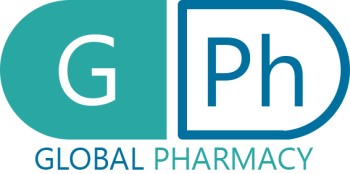GLAXOALL PRODUCTS
Joseph Nathan and Co. was founded in 1873, as a general trading company in Wellington, New Zealand, by a Londoner, Joseph Edward Nathan. In 1904, it began producing a dried-milk baby food from excess milk produced on dairy farms near Bunnythorpe. The resulting product was first known as Defiance, then as Glaxo (from lacto), and sold with the slogan "Glaxo builds bonnie babies." The Glaxo Laboratories sign is still visible (right) on what is now a car repair shop on the main street of Bunnythorpe. The company's first pharmaceutical product, released in 1924, was vitamin D.
Glaxo Laboratories was incorporated as a distinct subsidiary company in London in 1935. Joseph Nathan's shareholders reorganised the group's structure in 1947, making Glaxo the parent and obtained a listing on the London Stock Exchange. Glaxo acquired Allen & Hanburys in 1958. The Scottish pharmacologist David Jack was hired as a researcher for Allen & Hanburys a few years after Glaxo took it over; he went on to lead the company's R&D until 1987. After Glaxo bought Meyer Laboratories in 1978, it began to play an important role in the US market. In 1983, the American arm, Glaxo Inc., moved to Research Triangle Park (US headquarters/research) and Zebulon (US manufacturing) in North Carolina.
Burroughs Wellcome & Company was founded in 1880, in London by the American pharmacists Henry Wellcome and Silas Burroughs. The Wellcome Tropical Research Laboratories opened in 1902. In the 1920s Burroughs Wellcome established research and manufacturing facilities in Tuckahoe, New York, which served as the US headquarters until the company moved to Research Triangle Park in North Carolina in 1971. The Nobel Prize winning scientists Gertrude B. Elion and George H. Hitchings worked there and invented drugs still used many years later, such as mercaptopurine. In 1959, the Wellcome Foundation bought Cooper, McDougall & Robertson Inc to become more active in animal health.
When Burroughs Wellcome decided to move its headquarters, the company selected Paul Rudolph to design its new building. The Elion-Hitchings Building "was celebrated worldwide when it was built," according to Paul Rudolph Heritage Foundation president Kelvin Dickinson. Alex Sayf Cummings of Georgia State University wrote in 2016 that the "iconic building helped define the image of RTP," saying, "Love it or hate it, Rudolph's design remains an impressively audacious creative gesture and an important part of the history of both architecture and Research Triangle Park." United Therapeutics, which bought the building in 2012, announced plans in 2020 to tear it down.
Glaxo and Wellcome merged in 1995, to form Glaxo Wellcome plc. Glaxo Wellcome restructured its R&D operation that year, cutting 10,000 jobs worldwide, closing its R&D facility in Beckenham, Kent, and opening a Medicines Research Centre in Stevenage, Hertfordshire. Also that year, Glaxo Wellcome acquired the California-based Affymax, a leader in the field of combinatorial chemistry.
By 1999, Glaxo Wellcome had become the world's third-largest pharmaceutical company by revenues (behind Novartis and Merck), with a global market share of around 4 per cent. Its products included Imigran (for the treatment of migraine), salbutamol (Ventolin) (for the treatment of asthma), Zovirax (for the treatment of coldsores), and Retrovir and Epivir (for the treatment of AIDS). In 1999, the company was the world's largest manufacturer of drugs for the treatment of asthma and HIV/AIDS. It employed 59,000 people, including 13,400 in the UK, had 76 operating companies and 50 manufacturing facilities worldwide, and seven of its products were among the world's top 50 best-selling pharmaceuticals. The company had R&D facilities in Hertfordshire, Kent, London and Verona (Italy), and manufacturing plants in Scotland and the north of England. It had R&D centres in the US and Japan, and production facilities in the US, Europe and the Far East.















